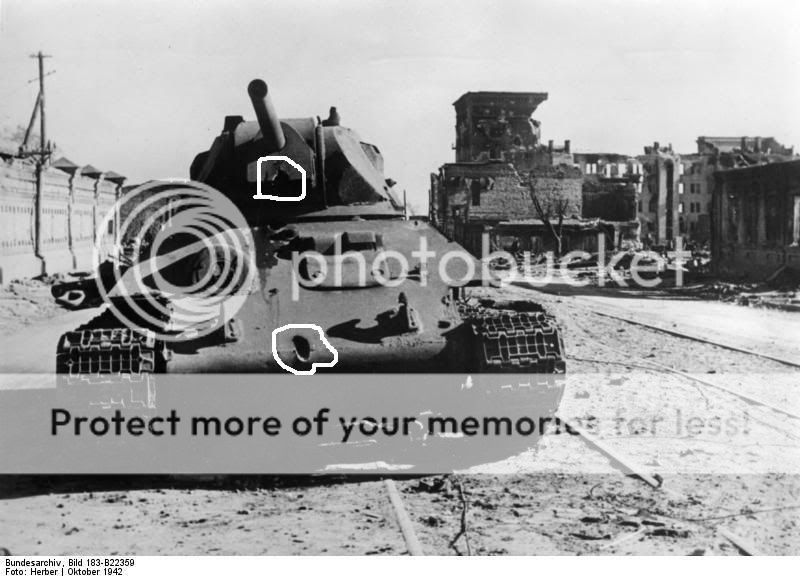Wilsonam, please cite your sources on the KwK.40 PzGr.39 repeatedly failing to penetrate the front upper glacis at 90
Upvote
0
Wilsonam, please cite your sources on the KwK.40 PzGr.39 repeatedly failing to penetrate the front upper glacis at 90
Slope effects for Russian APBC tend to be lower than for AP and APCBC rounds, due to the forces on the projectile noses. When AP and APCBC strike armor plate at an angle, the forces on the nose tend to push upward and create a moment about the projectile center of mass that favors ricochet. When blunt nosed APBC strikes armor at an angle, as the nose digs a net upward force is generated on the nose but the moment about the projectile center of mass tends to rotate the round onto the armor surface.
I'll dig them out when we get into the detail testing on the armor. Next stage (gawd help us) is banging away with all guns, rounds, angles etc etc. Then we check the theoretical math to make sure that we are getting the result the math predicts. Then we go back and check the resutls we are getting against more subjective data - do these results make "sense" given the test firing data, photographic evidence and battlefield evidence.I was asking for sources on the L/43 with the PzGr.39 repeatedly failing to penetrate the T-34's glacis at any range below 500m.
Still, thanks for all the time you invest discussing this with us "rivet counters".

Just remember guys, when the game goes live, type "wilsonamgodmode" into the console and all your tanking difficulties will disappear.
So it's all good that I remind Him that He did'nt get the Grandslam and Triple Crown (which Wales got twice this Millenium) thenAlan is British. His Queens English keeps reminding us.
Actually, Alan is ENGLISH. Not British. Well, officially I am also British and my passport says "European". But I am English. Apart from a teenie bit that is Norman.Alan is British. His Queens English keeps reminding us.
I just biting My tougue....really I amActually, Alan is ENGLISH. Not British. Well, officially I am also British and my passport says "European". But I am English. Apart from a teenie bit that is Norman.
As for the Rugby World Cup - after England's fairly dismal win of the Six Nations, I am NOT looking forward to RWC. I think we are (all) in for a major kicking unless we sharpen our game up considerably.
Data shown does not show AOA (angle of attack)...from hits shown from flat plain the APCBC round had a 60/40 chance of penetrating based on where it it hit and at what range (the drivers hatch was always a good target).
75mm L43 VERSUS T34 ARMOR
Valera Potapov has posted material on Combat Mission site where Russian tests result in 1000m penetration of T34 glacis by 75mm L43 APCBC (30
Even if a round fails to penetrate, it could produce spall on the inside of the vehicle. I wonder if that'll be simulated at all? Probably not, unless grenades also have tracked shrapnel.
We largely agree on the calculation methods - difference right now is that key base figure of the "50% success" figure. Scary how much tweaking that simple figure does.
Comments, anyone? Besides, I still have the turret front pretty vulnerable
Edit: and I meant to say - "see where sane and reasoned debate gets you?"

